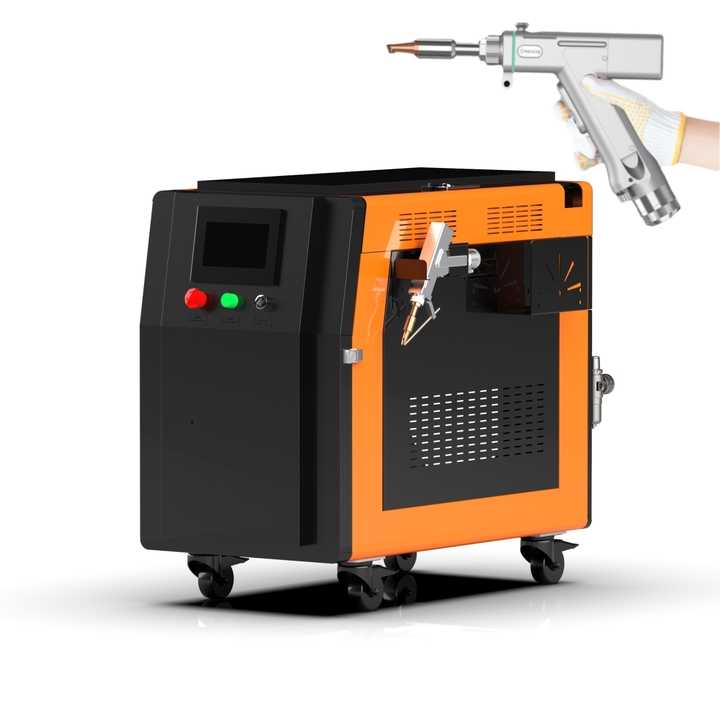Essential Laser Beam Welding Tools: Features, Uses & Buying Guide
Posted by harry brook
Filed in Other 0 views
Welding technology has evolved rapidly, and one of the most advanced methods today is laser beam welding (LBW). This process uses a highly focused laser beam to join materials with precision and minimal distortion. As a global leader in laser solutions, LaserChina provides a wide range of tools and systems designed to make welding faster, cleaner, and more accurate. In this guide, we will explore which tools are used for welding, their specifications, applications, advantages, and how to buy the right laser welding tool for your needs.
What Tools Are Used for Laser Beam Welding?
Laser beam welding tools consist of several key components working together to achieve perfect welds:
-
Laser Source (Generator):
The laser source produces a concentrated beam of light energy. Fiber lasers, CO₂ lasers, and diode lasers are the most commonly used types. -
Focusing Optics:
These lenses or mirrors focus the laser beam onto the target area to ensure deep and precise weld penetration. -
Beam Delivery System:
Optical fibers or mirrors guide the laser beam from the source to the workpiece. -
Welding Head:
The welding head includes nozzles, shielding gas ports, and a focusing lens. It directs the beam and protects the weld area from contamination. -
Motion System or Robot Arm:
Automated motion systems or robotic arms ensure smooth, accurate movement of the beam along the weld path. -
Cooling System:
Since lasers generate heat, cooling units are used to maintain stable operation. -
Control Unit:
A digital control panel or software interface allows users to set power levels, speed, and focus parameters.
Key Specifications of Laser Beam Welding Tools
When choosing a laser beam welding tool, consider the following technical specifications:
-
Laser Power: Ranges from 100W to 6kW depending on material thickness.
-
Wavelength: Fiber lasers operate around 1070 nm, suitable for metals.
-
Spot Size: Adjustable between 0.1 to 2 mm for different weld depths.
-
Pulse Frequency: Important for controlling heat input and welding speed.
-
Cooling Method: Water or air cooling depending on system size.
Applications of Laser Beam Welding
Laser beam welding tools from LaserChina are widely used across multiple industries:
-
Automotive: For body frames, battery components, and sensor housings.
-
Electronics: Welding fine components like connectors and microcircuits.
-
Medical Devices: For surgical tools, implants, and precision parts.
-
Aerospace: Joining titanium and nickel alloys with minimal distortion.
-
Metal Fabrication: Used in manufacturing stainless steel enclosures and machinery parts.
Advantages of Using Laser Beam Welding Tools
-
High Precision:
The focused laser beam allows for extremely accurate and clean welds with minimal heat damage. -
Fast Welding Speed:
Laser welding is much faster than traditional TIG or MIG methods. -
Minimal Distortion:
The narrow heat-affected zone keeps the material shape intact. -
Non-Contact Process:
The laser beam does not touch the material directly, reducing tool wear. -
Versatility:
Suitable for metals, alloys, plastics, and even dissimilar materials. -
Automation Ready:
Can be easily integrated into robotic systems for mass production.
How to Buy the Right Laser Welding Tool
When purchasing a laser beam welding system, follow these steps:
-
Define Your Application:
Identify material type, thickness, and welding speed requirements. -
Choose the Right Power Level:
For thin materials, a 100–500W system may suffice; for thicker metals, 1–6kW may be required. -
Check Compatibility:
Ensure the system supports your production setup, whether manual or automated. -
Ask for Technical Support:
Choose a brand like LaserChina that offers installation, training, and after-sales support. -
Compare Efficiency and Cost:
Focus on long-term performance, not just initial price. Energy-efficient laser systems reduce operational costs.
Conclusion
Laser beam welding tools have transformed the manufacturing industry by combining speed, precision, and durability. From automotive to aerospace applications, these systems deliver consistent quality and high productivity. LaserChina continues to lead in providing reliable, efficient, and cost-effective laser welding solutions tailored to modern industrial needs.
